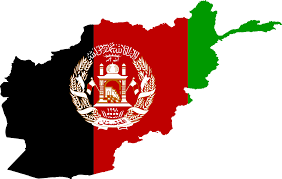22 July 2021
Afghanistan
China’s turn.
By Neil Tidmarsh
 Last week, an explosion on board a bus in Pakistan’s Khyber Pakhtunkwa province sent the vehicle plunging down a ravine. The bus was transporting thirty Chinese engineers to the Dasu hydroelectric dam project. Nine of them were killed. There were at least four other fatalities, including two Pakistani soldiers.
Last week, an explosion on board a bus in Pakistan’s Khyber Pakhtunkwa province sent the vehicle plunging down a ravine. The bus was transporting thirty Chinese engineers to the Dasu hydroelectric dam project. Nine of them were killed. There were at least four other fatalities, including two Pakistani soldiers.
This story hardly made the news – a brief mention (less than two column inches) tucked away inside the international pages last Thursday, and nothing since. But its significance is worth exploring, especially now, as the USA is withdrawing from Pakistan’s neighbour Afghanistan and the Taliban is rushing in to fill the void.
The cause of the explosion isn’t clear. At first Pakistan’s authorities blamed a fuel leak, but subsequent reviews of security and a suspension of work at Dasu suggest a terrorist bomb. Khyber Paktunkwa, also known as the North-West Frontier Province, lies along Pakistan’s border with Afghanistan. Islamist militants – the Taliban, Isis, al Qaeda and others – have been criss-crossing that frontier and have been active in that province for years. The Pakistani army has been fighting militant groups there for decades, and it’s the site of Pakistan’s worst terrorist atrocity, when six Taliban-affiliated gunmen (including two Afghans) attacked the Army Public School in Peshawar and killed 149 people including 132 children in 2014.
The Dasu hydroelectric dam project is part of the China-Pakistan Economic Corridor Investment plan, which is itself part of President Xi’s plans for a new Silk Road, his Belt and Road Initiative, a grand scheme to build a new economic belt stretching all the way from China to Europe by establishing new roads (by sea and land) across Asia. Pakistan is one of the most significant countries in the scheme. Beijing is spending $55 billion to build 21 power stations there, and the Economic Corridor will run the length of Pakistan from the Chinese border in the Himalayas to the huge Chinese-built port of Gwadar on the Indian Ocean, giving land-locked but resource-rich western China vital access to the sea. Western China consists largely of Xinjiang (home of the Uighur Muslims) and Tibet (forcibly annexed by China in 1951).
But it seems that militants including the Taliban have targeted the Corridor. At least forty-six Pakistani workers have been killed by terrorists while working on its projects. And four years ago, Chinese workers were evacuated from Balochistan province after two Chinese citizens teaching in its capital Quetta were kidnapped by Isis. The security services tracked the terrorists and their captives to a network of tunnels near the border with Afghanistan, but unfortunately the captors murdered the two teachers and escaped after a five-day underground battle against Pakistani commandos.
The incident infuriated Beijing and embarrassed Islamabad. Beijing demanded more protection for the hundreds of thousands Chinese working in the country, and Islamabad promised 15,000 extra troops to guard corridor projects. China made strenuous diplomatic efforts to contain the threat which terrorism poses to its projects in Pakistan; foreign ministry spokesman Geng Shuan announced that China would conduct ‘shuttle diplomacy’ between Pakistan and Afghanistan to try to contain the cross-border traffic in terrorism between the two countries. Foreign minister Wang Yi visited Kabul and Islamabad to get both countries to sign up to a ‘Crisis Management Mechanism’.
But last week’s incident in Khyber Pakhtunkwa province – if it proves to have been a terrorist attack – means that the problem persists. And it could well get much worse. The USA is moving out of Afghanistan and the Taliban is moving back in. The Islamic militants have already seized vital frontier points and claim to be in control of most of the country, threatening to take the major cities and overthrow the Kabul government (that would be the end of ‘shuttle diplomacy’ and ‘crisis management mechanisms’). The country looks as if it could become a state-sized haven and fortress for terrorist groups once again. This is an extremely worrying prospect for its neighbours: there are reports that Russia is moving troops into Uzbekistan and Tajikistan, the ex-Soviet states which border Afghanistan; and Pakistan is allegedly helping the Taliban, presumably on the basis that it’s better to keep in with what looks like the winning side (Afghanistan’s vice-president claims that the “Pakistan air force is now providing close air support to Taliban in certain areas”, a claim vehemently denied by Islamabad but which seems to fit in with Pakistan’s habit of antagonising neighbouring governments and its baffling and ambiguous relationship with terror groups – see Pakistan’s Own Goals, Shaw Sheet, 21 April 2016).
All this does not bode well for China’s projects in Pakistan. And Beijing’s actions against the Uighurs of Xinjiang have not endeared it to militant Islamist groups around the world. Some exiled Uighurs have found their way to Syria and are fighting alongside hard-line Islamists in the last rebel-held areas holding out against the Assad regime in what must be the last stages of the civil war; could they move on to find a base elsewhere – in Afghanistan, for instance? (This week, Beijing announced an entente with Assad, presumably to ensure that this never happens.)
Alexander the Great, the British empire, the Soviet Union, the USA – none of these great powers had anything to gain from going into Afghanistan, except the possibility of putting an end to the persistent and serious troubles which this problematic country was causing them. Will it soon be the turn of China, today’s coming power, to follow them into this difficult territory? Will Beijing, like them, find that direct intervention in Afghanistan is unavoidable? Will it decide that there is no other way to protect its interests and activities in Pakistan from the depredations of the warlike and unbiddable factions based just over the border? And is China likely to be any more successful than its predecessors?
tile photo: pixabay


